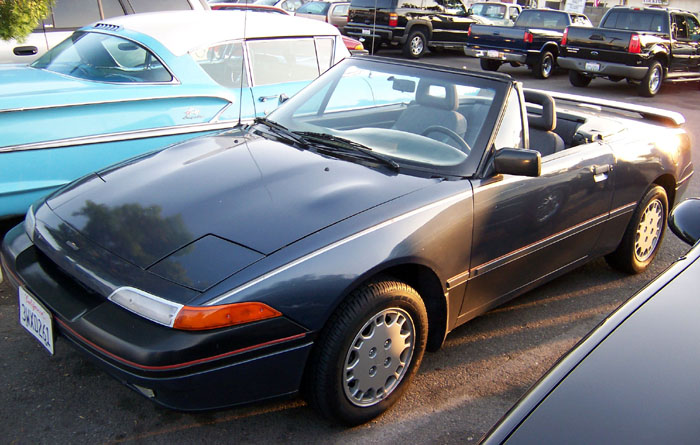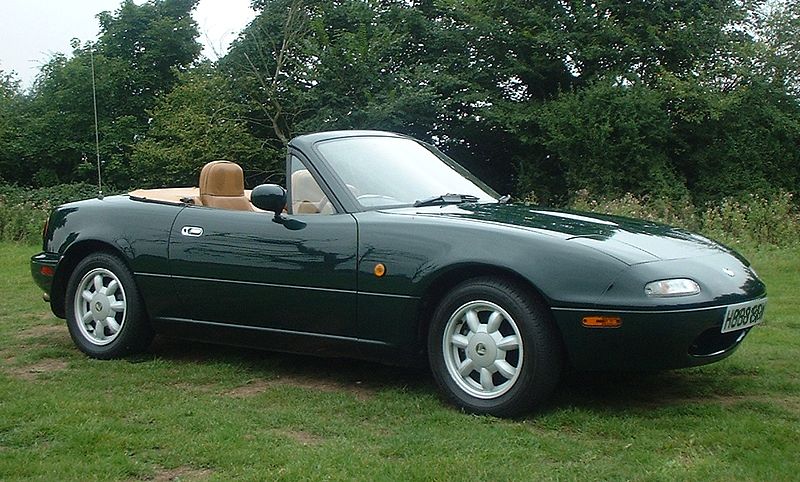Emarline
Well-Known Member
iirc, ciao means both hello and goodbye, in much the same way "aloha" does in Hawaiian.
Rear track width has nothing to do with which end is propelling the car.
Yeah, I know. I was going a little off-topic in saying that it affects the overall handling.
And I have to call bullshit. But hey, if you want to wear those blinders, go for it.Yes there are and they are basically limited to the daily grind.
Like I said FWD is fine if you are going to the store/work but for it fails in a sports car.
You think a 5 door 260 hp FWD hatchback is similar to a 2 seater 300hp RWD sports car? I think the Towncar/Mini comparison may be more realistic, didn't you just bash FWD because of big Cadillacs? But the fact remains, you can't compare FWD cars that had no performance intentions to RWD cars designed exclusively to be sports cars. Nowadays FWD is the norm, while RWD is a bit of a novelty. If you look back to the 50's-70's you'll notice that everything was RWD. And almost all of them were shit. Fast forward to today and everything is FWD. The one constant is that some of those cars were built to perform on a track, while the other 99% were built to be real cars for the real world. Lets not forget that cars weren't created to drive fast around race tracks. That's a tiny little insignificant niche in the market, nothing more.You are comparing drivetrain vs setup again, yes a Towncar will be a pig next to a Mini no doubt about that but if you run somewhat similar cars like MS3 and 350z the Z will have the edge.
There are lots of "hot" versions of regular old family cars here. I just don't think we like hatchbacks and wagons as much as the Europeans. But you're right about one thing, it's cheaper for us to run proper performance cars, which probably contributes to the lack of normal cars with top range engines and manual transmissions. Performance driving is just too insignificant for the vast majority of drivers.Hot hatch is a compromise born out of necessity rather than any real advantage. In the US market the hot hatch basically doesn't exist as our car/fuel/insurance prices are relatively cheap and its not uncommon to have multiple vehicles. They are only big in Europe because they provide some driving excitement while still allowing for some practicality as its much more difficult to have a sports car and a daily there due to higher prices.
And I have to call bullshit. But hey, if you want to wear those blinders, go for it.
The limit at which a performance oriented FWD becomes inferior to RWD is not below the sports car segment, but rather half way up, imo. A lot of these hot hatch/sport compact cars could post faster lap times than cars like the MX5. The only argument against them is this idea that RWD is better because... well, just because! I don't buy it. If you like the push sensation of a RWD setup, that's great, but don't go confusing personal preference for scientific fact.


Also, I agree that FWD cars with too much power don't work, but don't knock FWD because of that; it's perfectly fine in the 130-150 hp compact cars on sale today.

Let me make one thing clear, I'm not making any claims to FWD superiority. When you narrow your view down to only performance driving, FWD is at a disadvantage, of course. But that doesn't mean it sucks or it "fails" or any of this other fanboy nonsense. It's capable of offering great performance, handling, steering, etc. for a cheap price while maintaining a high level of practicality. In terms of what a car is actually suppose to be, these little 2 seater roadsters are more full of "fail".
And I'm sure the same level of quality was put into that Capri as Mazda put into the MX5. [/sarcasm]
iirc, ciao means both hello and goodbye, in much the same way "aloha" does in Hawaiian.
Wasn't the NHTSA 'safety' bike FWD?

The top one is the US Mercury Capri, borrowed from Ford Australia and built with the same 323 mechanicals as the Miata was. It's essentially the same car, just failwheeldrive. And almost nobody bought it because it didn't drive nearly as well as the Miata due to being failwheeldrive.
That's unfair, since they just made a car that was designed to be RWD and made it FWD, of course it fails.
It all depends on the car. Wasn't there some big argument about how F-bodies suuuuucked to service? I had a 2002 Pontiac Grand Prix for a while and yeah, that would be a bitch to get the spark plugs out from the rear cylinder bank. But not all FWD cars are like that. Some, maybe even most, are far more out in the open than that. And they tend to be smaller too, my dad always complains about servicing his Bronco because it's too damn big, while he liked servicing his old 1998 Eclipse, since it was so low and things like the spark plugs were located right on top and very easy to get at.Perhaps, but FWD will forever remain failwheeldrive to me because of issues mentioned above plus the facts that even if you leave performance driving out of it:
Once the car is moving it doesn't actually have a traction advantage over a similar RWD car, it's actually at a disadvantage. I've gotten a RWD sports car on all-seasons up icy hills in Dallas that FWD cars could not climb.
FWD suuuuuuuucks to service, is more fragile, and has higher maintenance costs. Repeated CV boot or axle replacement, anyone?
One of the big claimed advantages of FWD was that you would have increased internal space because there would be no need for the tunnel down the center of the passenger compartment. Yeah, how did that work out again? Most FWD cars still have a tunnel.
The real 'advantage' of FWD is that it's cheaper (and faster) to manufacture. Not to own and maintain, just to make. Nothing more, nothing less, otherwise, yes, it does suck and fail.
Actually, according to the Australian figures, it was. It was made out of most of the same parts from the same suppliers used on the Miata; the only major issue it has there is that the top tends to leak. The US ones were re-engineered for LHD and a couple of problems were introduced there, but it wasn't horribly worse than the Miata.
Once the car is moving it doesn't actually have a traction advantage over a similar RWD car, it's actually at a disadvantage. I've gotten a RWD sports car on all-seasons up icy hills in Dallas that FWD cars could not climb.
It all depends on the car. Wasn't there some big argument about how F-bodies suuuuucked to service? I had a 2002 Pontiac Grand Prix for a while and yeah, that would be a bitch to get the spark plugs out from the rear cylinder bank. But not all FWD cars are like that. Some, maybe even most, are far more out in the open than that. And they tend to be smaller too, my dad always complains about servicing his Bronco because it's too damn big, while he liked servicing his old 1998 Eclipse, since it was so low and things like the spark plugs were located right on top and very easy to get at.
Less parasitic loss is another advantage of FWD. When I look to see what the most efficient cars on the market are, they tend to be FWD.
I still have a hard time believing that. From everything I've heard about the MX5's development, the designers/engineers/whatever were so meticulous to the point where they might all have a serious case of OCD. I don't think Mazda just slapped it together using parts designed by another company for another car used in ways they were not intended to be used in. You mentioned the Capri used parts from the 323, so how well did the 323 sell? I'm going to venture a guess and say a lot better than the Capri.
Okay, but conversely - how many people have been caught off guard in icy conditions and have totaled their RWD cars? The percentage of accidents in RWD and FWD cars might be the same, but the causes are quite different. You very rarely hear about surprise understeer.
(I'm not trying to say that FWD is better, au contrair. I just don't think it is as bad as you make it out to be)
1) MX5 generally has less power than current hot hatches which generally are 200+And I have to call bullshit. But hey, if you want to wear those blinders, go for it.
The limit at which a performance oriented FWD becomes inferior to RWD is not below the sports car segment, but rather half way up, imo. A lot of these hot hatch/sport compact cars could post faster lap times than cars like the MX5. The only argument against them is this idea that RWD is better because... well, just because! I don't buy it. If you like the push sensation of a RWD setup, that's great, but don't go confusing personal preference for scientific fact.
Depending on the year the Z can be 286HP but it lacks a turbo. How does MazdaSPEED 3 have no performance orientation?You think a 5 door 260 hp FWD hatchback is similar to a 2 seater 300hp RWD sports car? I think the Towncar/Mini comparison may be more realistic, didn't you just bash FWD because of big Cadillacs? But the fact remains, you can't compare FWD cars that had no performance intentions to RWD cars designed exclusively to be sports cars.
What are you smoking? Cadillac, BMW, MB, Jaguar, Infiniti, Lexus... All make RWD with optional AWD, virtually all trucks and work vans come in RWD with option for AWD. Some manufacturers switched to AWD nearly exclusively or as options even for FWD cars. RWD is far from a "novelty" but yes you won't find it in econocraps.Nowadays FWD is the norm, while RWD is a bit of a novelty. If you look back to the 50's-70's you'll notice that everything was RWD. And almost all of them were shit. Fast forward to today and everything is FWD.
That likely has a lot more to do with the fact that when they build an econobox they build it as FWD as it cuts costs. For instance the Stang V6 with automatic tranny gives you 31mpg hwy despite having 300+HP. Clearly RWD doesn't kill efficiency.Less parasitic loss is another advantage of FWD. When I look to see what the most efficient cars on the market are, they tend to be FWD.
Push my car hard on a downhill in the wet and you will see it...You very rarely hear about surprise understeer.
Push my car hard on a downhill in the wet and you will see it...
Exactly. You have to be driving fast, which most of the time you do on purpose. So you are kind of prepared. RWD can spin much easily in wet conditions, even if you are not driving that fast. So it can be very unexpected.
That likely has a lot more to do with the fact that when they build an econobox they build it as FWD as it cuts costs. For instance the Stang V6 with automatic tranny gives you 31mpg hwy despite having 300+HP. Clearly RWD doesn't kill efficiency.
